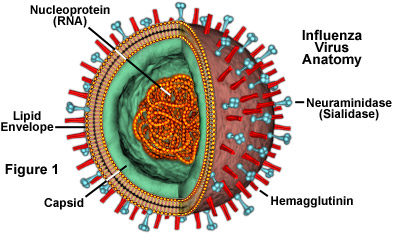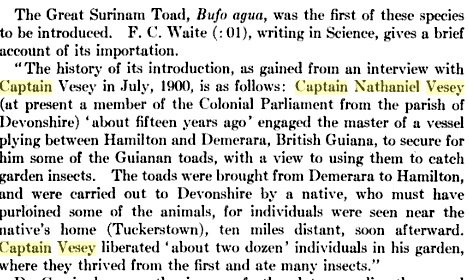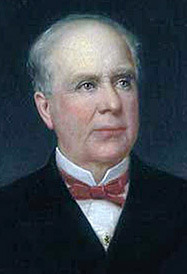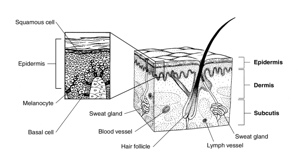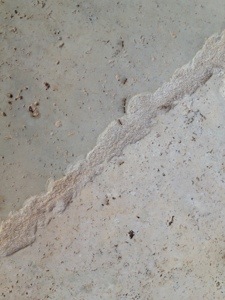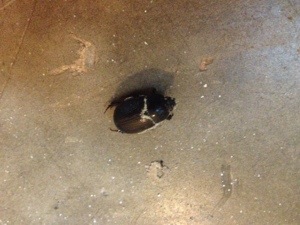I probably shouldn’t be surprised to read in Bermuda news that flu vaccination sessions are being held over the next few weeks, but on some level I suppose I had associated flu with inclement weather, rain, dark evenings, hot lemon and blankets. Seasonal flu, northern hemisphere November to March, and the annual flu campaign – why not in Bermuda, it is in the northern hemisphere, does have a winter season and is very much not isolated from the world. It just hadn’t occurred to me.
My next thought was “should I have one?” For several years now I have “qualified” for a vaccination in UK – first as a health care worker and then as a health “hazard” (aka “person with chronic illness” as the more politically correct term) so where do I stand on Bermuda?
How do I approach answering this?
Some background:
The virus:
Influenza is caused by a virus, an orthomyxovirus. There are types A,B and C. Seasonal flu is commonly from types A or B. All viruses will have special characteristic protein molecules sticking out of their coat and these are used to further classify flu viruses – type A flu viruses will have varieties of H proteins and N proteins (haemagglutinin or neuraminidase). The proteins themselves will differ and at least 16 different H proteins have been identified so far. So different strains of virus will have names, such as “H3N2“, which was the main one causing seasonal flu last year. Others in the news have been “H1N1” that caused the 2009 pandemic or “H5N1” which was an avian flu virus that jumped the species barrier to infect a human in 1997.
The viruses can change the proteins they display, akin to wearing a different hat, and this can happen if two strains meet each other in the same victim. A virus can only reproduce inside a living cell but if two or more are trying to duplicate in the one cell then it’s inevitable they will make mistakes and get stuck together with wrong or different proteins, so creating a new strain. While most strains prefer one species to infect, some can make a leap, such as when “swine flu” viruses because capable of infecting a human. This all makes keeping up with the new strains extremely difficult and is the main reason why we have to have a flu vaccination every year – the strains circulating can change quickly.
The vaccine:
The vaccine is reconfigured every year according to data from a worldwide surveillance programme that informs WHO which strains are in circulation. Commonly the vaccine consists of 3 strains ( 2 type A and one B) but from last year in some places four strains (2A and 2B) have been used. Northern hemisphere vaccines will often be different from Southern ones, it all depends on which viruses are predominant in the areas.
Vaccines are given just before the anticipated season, i.e. October or April. In tropical regions the picture is less distinct as the illness can occur year round without pattern so guidelines for vaccinations here are still being developed. Bermuda is not tropical, it has seasonal flu in the winter just like UK, Europe and much of US.
Seasonal vaccination is 70-90% effective at preventing disease. It is slightly less effective in the elderly but where they do contract influenza after vaccination the severity of the illness tends to be much reduced.
The injected vaccine does not contain live viruses. It is not possible to contract flu from the vaccine. That may not fit with the tales you hear – but it is fact. Some people do feel unwell after vaccinations, which could be due to an inflammatory response, but it isn’t flu itself and will not have the bad sequelae that may follow flu infections.
The illness:
Worldwide each year there will be around 3-5 million cases of severe influenza and 500,000 deaths. Those figures need some context: there are just over 2 million new cases of HIV infection worldwide each year; worldwide there are around 100,000 new cases of melanoma. Just because flu is common doesn’t mean it is not serious.
Pandemics occurred in 1889, 1918, 1953 and 1968. Did they reach Bermuda? Official reports from the island government claimed no cases of influenza on Bermuda in 1889-90 but at the time there was a Swedish ship quarantined off-shore with dengue fever that was later found to be influenza brought across from Cuba. It would be surprising if the island had escaped from the 1918 pandemic but I haven’t yet found a source for the data. WHO unfortunately does not list Bermuda as a separate country, rather it seems to be included as part of the Pan American Health Organisation (PAHO) which makes some sense given its proximity but none given it is a British Dependency. Neither US nor UK hold statistics for Bermuda, but maybe they don’t exist (triangles and all that)
In Bermuda:
Between 2000 and 2008 the average annual incidence was 744 cases per year.
Bermuda has used seasonal flu vaccination since the 1970s and coverage for the over 65s is around 60%. That figure isn’t all that good – Chile and Cuba claim a 100% uptake in the elderly and WHO were aiming for 75% coverage by 2010. In UK financial incentives for practices boosted uptake to above 80% but there doesn’t seem to be an equivalent drive in Bermuda.
One report on the drive-in flu campaign next week stated that it cost $10 for the vaccine, but in smaller print suggested those in health groups at risk should first get a prescription from their GP. I haven’t had to pay for any prescriptions yet on the island, they seem to be covered by insurance, but to see a GP the co-pay is $40 and I don’t know of you can get a prescription without a consultation – it might seem easier to pay the $10 at the drive-in.
The report also implies you don’t actually have to get out of your vehicle to have the injection – so much for the “sit in the waiting room for 10 minutes afterwards” advice we always gave patients in case they fainted or felt unwell. I think I would still suggest you don’t drive off immediately!
Conclusion:
All this makes me feel a little nervous – it’s different from what I normally do, I don’t know the rules, it’s not a familiar process. The publicity assumes a degree of knowledge, and although I know I do need one I am less clear on how I actually go about getting one. Are ex-pats entitled to the $10-government-subsidised vaccines? Should I book an appointment with my GP? Can I attend a drive-thru even if there isn’t one in the parish where I live?
Unusually for one of my blogs I have generated more questions that the ones I set out to answer. I am tempted to hide behind the low incidence of flu on the island – 744 is less than 1.25% of the population so in daily life I am unlikely to encounter the virus. But I am catching a plane back to UK at Christmas and that changes everything. If I don’t meet a virus on the plane then one of my relatives will probably introduce one with the presents or the turkey. So somehow I have to conquer my anxieties and join the queue for a Bermudian flu vaccination!

